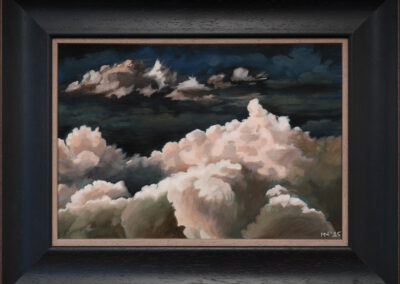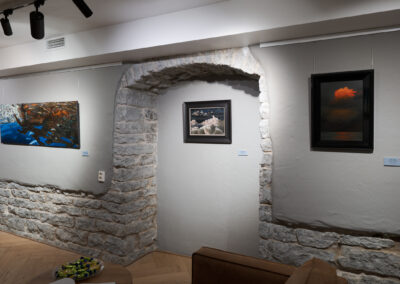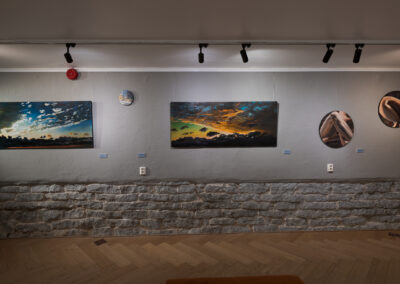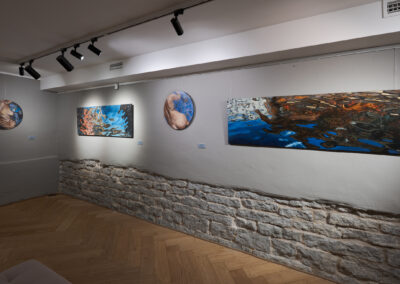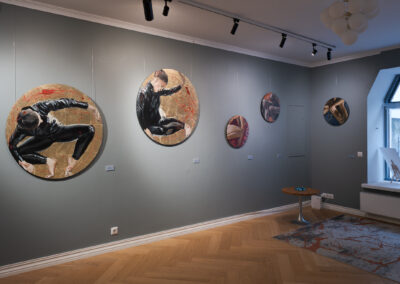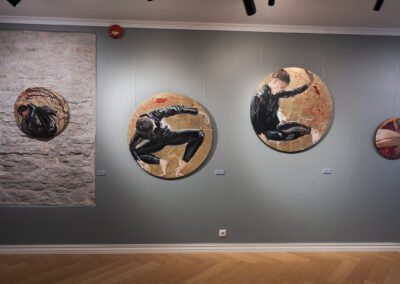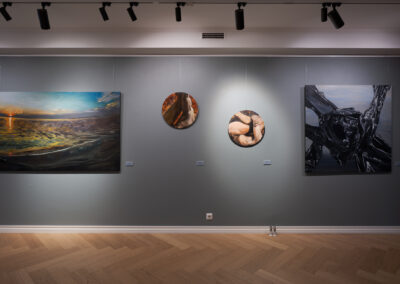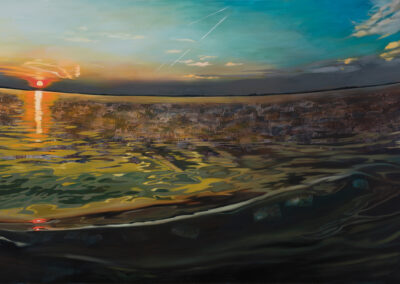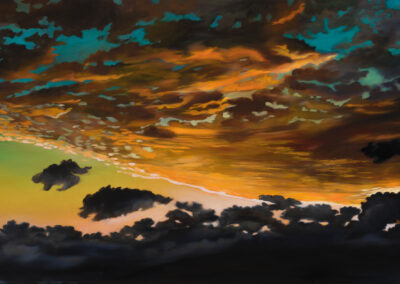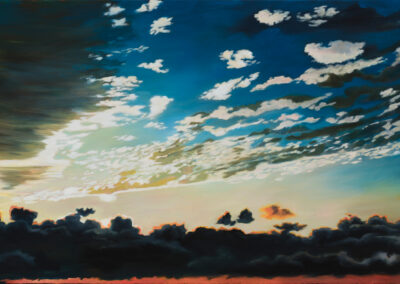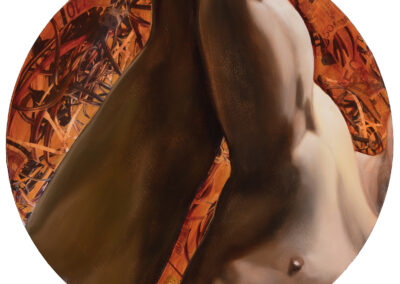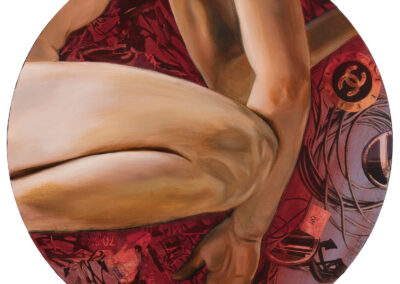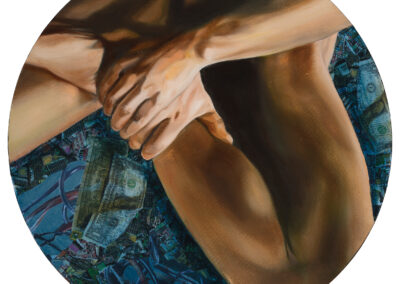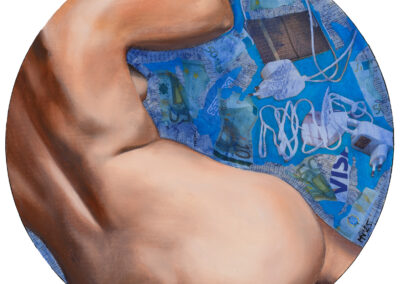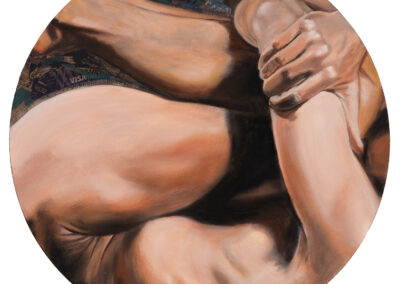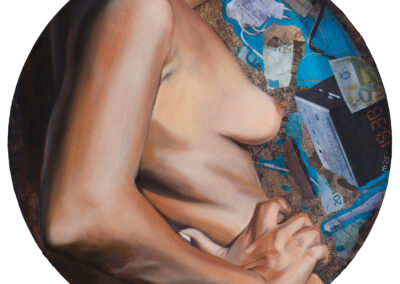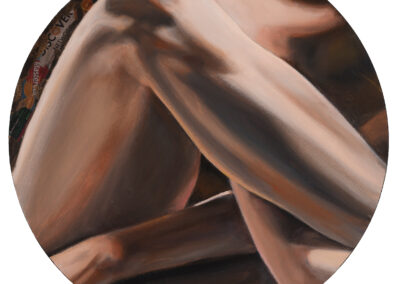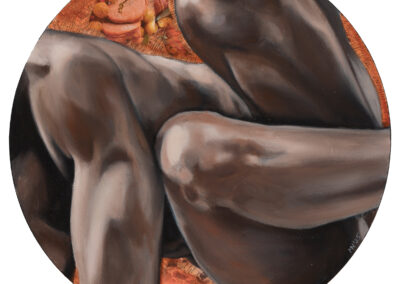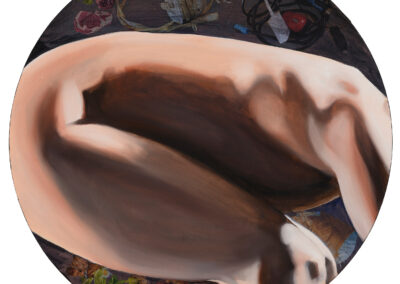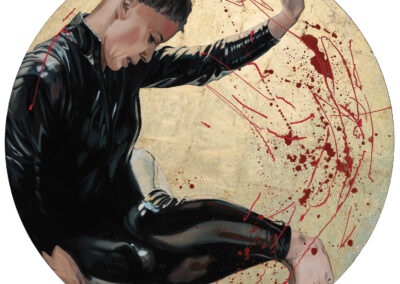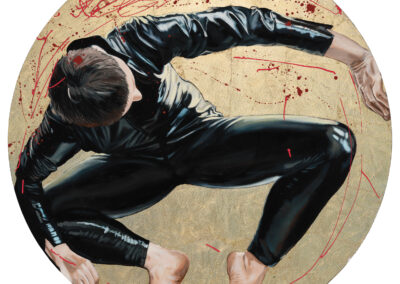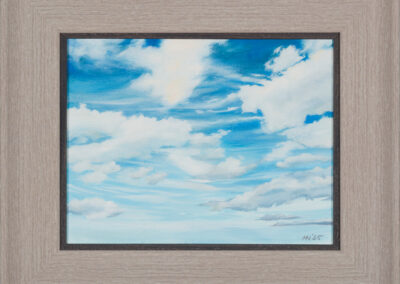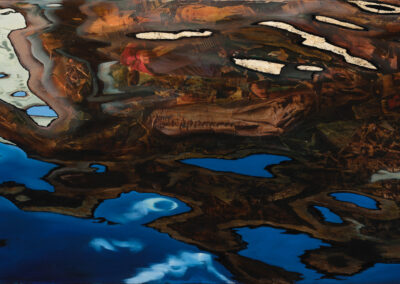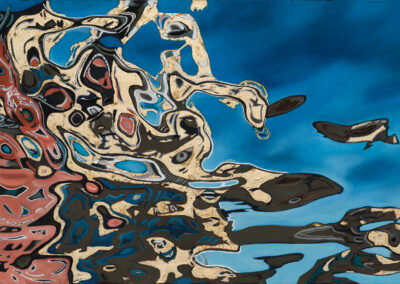„The Age of Illusions“
04.03.–29.03.2025, Allee Gallery, Tallinn
“The Age of Illusions” deals with both the relationship between man and the lost world (for example, the paintings “Lost Atlantis” I and II) and personal imagery (the “Ego” series), offers sea paintings and beautiful sunsets (for example, the paintings “Sunset in the West”). However, the external or formal beauty of the picture, such as the old-fashioned detailed painting of the material texture of the figure’s clothing a la Jean Auguste Dominique Ingres, actually conceals an essentially ambivalent play with status symbols – money. Here, Nukke most directly deals with an illusionistic spatial play like a surrealist who focuses on the visual effect of surprise.
The background of Nukke’s paintings is often paper money, the overpainting of which sends a message as if they are being annulled, rendered worthless, and a critical attitude. On the other hand, the overpainted money merges into the overall picturesqueness of the work, which is subject to strict coloristic control. Nukke often combines photographic detail and naturalism with spontaneous dripping a la Jackson Pollock, bringing an improvisational, more emotional level to the composition. But Mall Nukke’s treatment of figures is also not unambiguous. From a certain angle, their gender cannot be read, they seem androgynous or genderless. Most of the figures are faceless, anonymous characters. The grotesque and irony that began in his earlier work when talking about world affairs are Nukke’s working tools as a rationalist – just as he remains faithful to stories from ancient mythology when talking about contemporary problems. Or the use of the circular tondo format that was popular during the Renaissance, in which mainly religious themes were formulated at that time. When gold is added to the colour structure of the picture, the picture shines before the viewer like a solemn icon. But is Nukke reading us a moral or is he just turning everything into an aesthetic game? Apparently, it is the titles that help create the fields of action of the works, providing the key to deciphering the ambiguous messages, but as befits good art, something always remains an intellectual puzzle…
Harry Liivrand, curator
